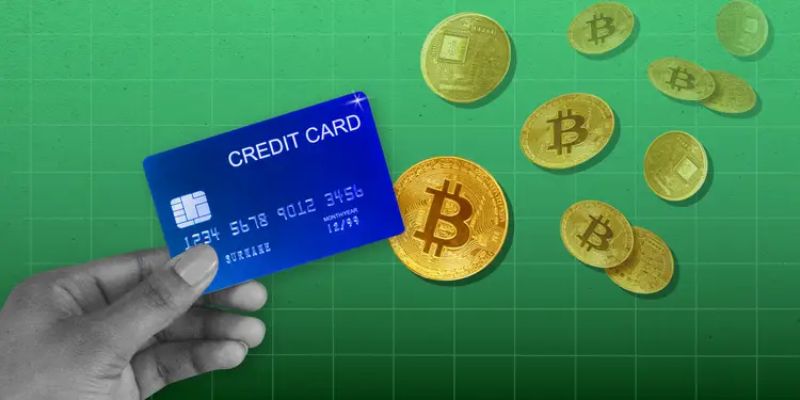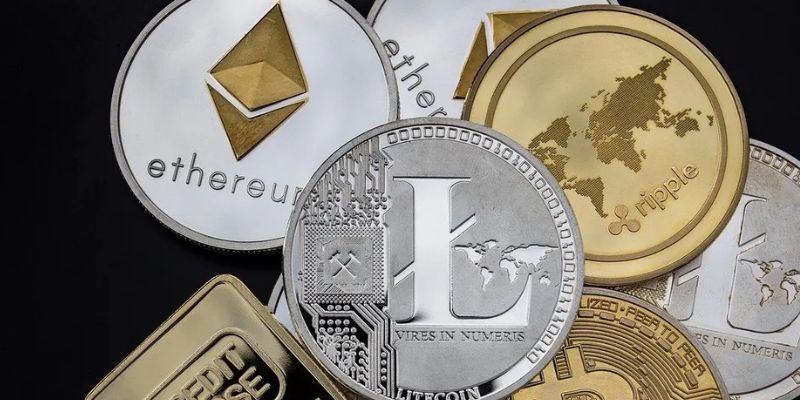Cryptocurrencies promise a world of high-tech and low costs. But watch out! Sneaky fees can bite into your digital wallet without you even knowing it. If you’re tired of your hard-earned money vanishing into thin air, it’s time to learn how to avoid hidden fees on crypto exchanges. Get ready to arm yourself with knowledge that turns you from a bystander into a sharp-eyed trader. We’ll jump straight into the heart of fee-free strategies and no-nonsense ways to keep your coin count high. Let’s tackle those hidden costs and make smart moves that will keep your investments growing.
Understanding Cryptocurrency Transaction Costs
Deciphering Exchange Fee Structures
Have you ever felt lost in a maze of fees? You’re not alone. Exchange fees can be tricky. They often hide in complicated terms. But knowing them means saving cash. So, where do we start? With each trade, we meet two main costs: trading fees and withdrawal fees.
Trading fees bite off a piece of each trade. They differ a lot across platforms. Why does this matter? Picking the right place to trade can mean more money stays in your pocket.
Deposit fees, oh they’re sneaky! Not all places charge them, but some do. And they add up quickly. So, always check the fee schedule before moving your funds. We have to be fee detectives here.
We can’t forget about fiat to crypto costs. Buying crypto with dollars or euros? The conversion step often carries its own charges. Look for platforms that have low or no fees for this, especially if you’re moving in and out of crypto often.
Comparing Maker and Taker Fees
Maker and taker fees talk about how your trade affects the market. If your trade fills right away, you’re a taker. Taking orders can cost you more because you’re using up market liquidity. If your trade doesn’t fill right away, you’re a maker. You’re adding to the market’s pile of orders. Some exchanges reward this by charging less.
Why should you care about that? Knowing which you’re likely to be can help you choose an exchange. One with lower fees for your trading style means keeping more money for you.
Maker and taker fees range wide from platform to platform. Don’t settle for the first one you find. Shop around. Use an exchange fee comparison tool to make your life easier. We want zero stress and more savings, right?
Remember, there’s no one-size-fits-all in crypto trading costs. You’ve got to dig a bit to spot those hidden crypto fees. With a bit of work, you can find low fee virtual currency platforms. And that’s a big win for your wallet.
So, always check the fine print on fee schedules. And get smart—compare before you commit. A no fee crypto exchange might look good, but check it ticks all your boxes. Stay alert, stay informed, and say goodbye to those hidden fees!
Identifying Hidden Fees in Crypto Trading
Spotting Hidden Crypto Fees and Avoiding Surcharges
Ever feel like you got more than you bargained for with crypto fees? You’re not alone. Some exchanges sneak in extra charges. It’s like finding a spider in your shoe; nobody wants that! But if you know where to look, you can avoid those pesky ‘spiders.’
First, check the fee schedule. Don’t yawn; it’s important! Make sure you know what you’re paying for each trade. Ask yourself, am I paying a ‘maker’ or ‘taker’ fee? Makers add orders to the market, while takers take them away. Makers usually pay less. Do you see trading pair fees listed? Those can add up if you trade a lot.
Watch out for withdrawal and deposit fees on exchanges. They can be flat rates, or sneakier— a percent of your withdrawn cash. And if you’re moving money from fiat to crypto, the conversion fees can bite. Like getting gum in your hair, it’s sticky and unnecessary.
Some exchanges say they have no fee crypto exchange. But read the fine print. Are there hidden costs in those trading platforms? They might push blockchain network fees onto you. Like having to buy your own snacks at a party, it just feels wrong.
Transparency in Exchange Pricing and Fee Schedules
Keeping exchanges honest is like playing detective. They should tell you all their fees upfront. If they don’t, that’s a red flag. Would you buy candy if you didn’t know the price?
Understanding exchange fee structures puts you in charge. Look for transparency in exchange pricing. It’s like having a flashlight in a dark cave. If the exchange doesn’t show what each service costs, ask why. Look for zero commission crypto investments if you can. They’re rare but worth it, like finding a four-leaf clover.
And get familiar with gas fees if you’re using networks like Ethereum. They can change fast, like the weather in spring. Find a crypto exchange fee calculator; it’s like having a smart cookie do your math. They predict your trade’s cost, helping you keep more coins in your wallet.
Now, what if you could trade without worrying about fees cutting into your stash? You need to find a spot with low-cost withdrawal platforms. Some will offer flat versus variable exchange fees, so budgeting is easier.
Remember, the key to avoiding surcharges in crypto and minimizing slippage in crypto trading is to stay informed. Don’t let tricky fees drain your hard-earned dough. Do your homework, and you’ll be trading smart, saving a buck or two for a rainy day! Keep those fees transparent, like a clean window, and you’ll see your way to cost-effective crypto swaps.
Strategies to Reduce Crypto Transaction Fees
Utilizing Crypto Exchange Fee Calculators
Let’s dive right in. Many traders ask, “How can I figure out what I’m really paying?” Simple: use a crypto exchange fee calculator. This tool shows the fees before you trade. You’ll see exactly what you pay every time. No surprises.
For crypto trading costs, the calculators are lifesavers. They crunch the numbers for you. Think of them like smart pals that make math a breeze. How do they work? Just enter your trade details into the calculator. It will then tell you the trading pair fees and other charges fast.
Now, you might wonder, “Where do I find these calculators?” Check your exchange’s website first. Many offer them for free. They help you understand exchange fee structures and can show hidden costs. Exchange fee comparison can be a headache. But with these tools, it’s easy.
Think about deposit fees on exchanges. They can add up. With the calculator, you enter the amount to deposit. It tells you the fee. Like magic, you get to see if the fee is fair or if it’s too much.
Blockchain network fees can also shock traders. Guess what? Fee calculators include these, too. They use the latest data to give you the cost of your crypto swap. You don’t have to guess; the calculator tells you.
Finally, these calculators often explain maker and taker fees. These are fees based on how your trade boosts or drains market liquidity. Maker fees can be lower because they help the market. Taker fees can be higher because they take away from the market’s orders.
Choosing Low Fee Virtual Currency Platforms
Ready for another smart move? Choose a low fee virtual currency platform. This step can make a big change in your trading costs.
First, look for a no fee crypto exchange. They’re rare, but they exist. Here, you can trade without those pesky trading fees eating at your crypto. It’s like finding a treasure in the crypto sea.
But make sure you understand all their fee structures. Some may not charge trading fees but have steep withdrawal fees. Always do your homework. Look for clear info on their sites about all their fees.
You may also find platforms with either flat or variable exchange fees. What does that mean? A flat fee is the same, no matter the trade size. Variable fees change with your trade size. Think about what fits your trading style best.
Finally, keep an eye out for special deals. Some platforms slash fees for higher-volume traders. Others may offer lower fees for holding their tokens. These deals might save you big in the long run.
To sum it up, reducing transaction fees in crypto is all about being smart and proactive. Use the calculators. They’re like having a secret weapon. Pick platforms with a clear fee layout, and watch those fees shrink. Your wallet will thank you, and your crypto will stretch further.
Smart Trading: Minimizing Costs on Crypto Exchanges
Fee-Free Cryptocurrency Trading Tips
You want to trade crypto without nasty surprises in fees, right? Stay sharp. Always check fee schedules on exchanges before trading. Some platforms offer lower fees for more activity. So, trade more, pay less. Be smart. Use a crypto exchange fee calculator. It will show the real cost of your trade.
When you’re into cryptocurrency trading costs, don’t fall for the no fee hook. No fee doesn’t always mean free. Some no fee crypto exchange options may hide their charges. They might widen the price you pay for a coin. This way, they still make money. Spotting hidden crypto fees means you read all the small print.
Also, don’t stick to one coin. Trading pair fees can add up. Look for pairs that cost less. And be kind to your future self. Choose low fee virtual currency platforms from the start.
Now for withdrawal and deposit nuggets. Crypto withdrawal fees can bite. Always know them before moving your coins. Also, try to avoid small deposits. Some exchanges charge more for these. Go for bigger moves to cut costs. This saves on deposit fees on exchanges.
Finally, remember the conversion factor. Fiat to crypto conversion fees can be steep. If your platform swaps your dollars for crypto, they might charge a hefty fee. Do this less often by planning ahead.
Avoiding Inactivity and Maintenance Fees in Crypto
Let’s tackle the sneaky ones: inactivity and maintenance fees. Some platforms charge for not trading. Others might pull from your wallet for ‘maintenance’ even when you’re trading. What’s with that?
First, identify hidden fees trading crypto linked to your account. Maybe you made your account and forgot. Go see if there are any charges piling up. Maintenance fees come next. If a crypto account maintenance fee shows up, question it. Why pay for maintenance when the blockchain is doing the work?
Also, slippage can slim your wallet. It happens when your trade price slips from your click time to the time it’s done. To minimize slippage in crypto trading, use limit orders. This locks your price.
Avoiding inactivity fees on platforms is all about staying active. If you need a break from trading, think about pausing your account. This could save you cash. And definitely speak up if you see a fee you didn’t sign up for. Ask the platform about it. Mistakes happen, but it’s your coin on the line.
There you have it. Trading doesn’t have to eat into your digital pocket. With these tips, you can slash those fees and trade like a pro. Keep your eyes open for the hidden stuff. Plan your trades and watch those costs tumble. That’s how you outsmart the exchanges and keep more crypto in your wallet.
To wrap up, we’ve drilled into how crypto transaction costs work and ways to keep them low. From understanding exchange fees to spotting the hidden ones, it’s all about smart trading. We’ve explored how exchange fees differ and how to use tools like fee calculators. Plus, we looked at ways to avoid sneaky charges and picked out platforms with the lowest fees.
In conclusion, keep these pointers in mind for your crypto trades. Knowledge is power, and the right moves save money. Stay informed, use the tools available, and trade smart. Cut those fees down and watch your crypto savings grow. Happy trading!
Q&A :
How can I identify hidden fees before trading on crypto exchanges?
To avoid unwanted surprises, conduct thorough research on the exchange’s fee structure, which can usually be found in their terms of service or on a dedicated fees page. Look for information on trading fees, withdrawal fees, and any other transaction fees. Also, check for ‘maker’ and ‘taker’ fees, as well as fees for different payment methods. Reading reviews and user experiences on forums like Reddit can also shed light on any less obvious costs.
What are the common types of hidden fees in cryptocurrency exchanges?
Cryptocurrency exchanges may have several fees that aren’t immediately apparent. These can include, but are not limited to, spread fees, where there’s a difference between the buy and sell price, withdrawal and deposit fees which vary depending on the method or amount, and inactivity fees if you don’t trade for a certain period. There might also be fees hidden within the exchange’s currency conversion rates.
Are there any crypto exchanges with no hidden fees?
While most crypto exchanges have fees to some extent, some promote greater transparency than others. Exchanges like Kraken, Binance, and KuCoin are known for being more upfront about their fee structures. However, completely fee-free exchanges are rare and might compensate by offering services at a premium or through other methods. Always evaluate the full pricing model of an exchange before signing up.
What steps can I take to minimize fees when trading cryptocurrencies?
To minimize fees, you can:
- Use limit orders instead of market orders to potentially qualify for ‘maker’ fee discounts.
- Consolidate your transactions to reduce the number of times you pay a fee.
- Withdraw your crypto to a personal wallet only when necessary, as withdrawals usually incur fees.
- Stay informed about fee changes and promotional events that might reduce costs.
- Consider trading larger amounts less frequently to benefit from lower fee percentages often offered for high-volume trades.
Does the use of trading bots on crypto exchanges lead to more hidden fees?
Using trading bots does not inherently lead to more hidden fees, but you should be aware of your increased trading frequency when using bots. Higher transaction volume can lead to higher overall fees, depending on the exchange’s fee structure. Moreover, the bot service itself may charge fees. Read the terms and conditions of both the bot service and the crypto exchange carefully to understand all potential costs.



